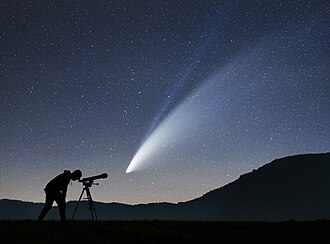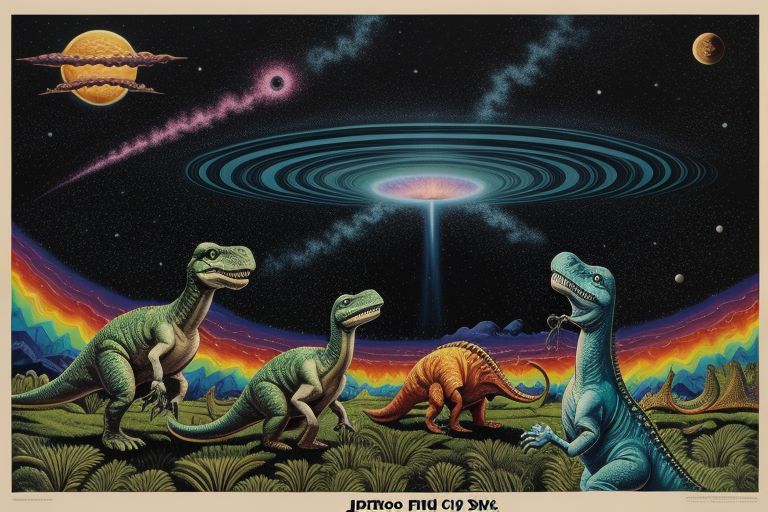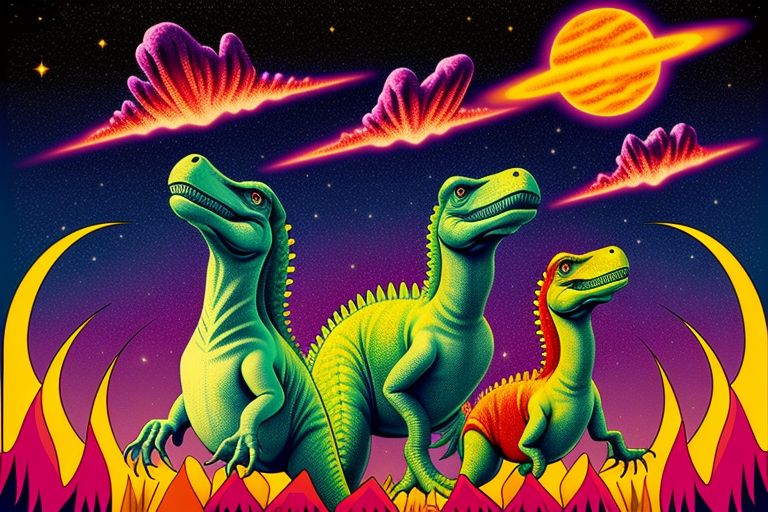




Uranus was the first planet found with the aid of a telescope. It was discovered on March 13, 1781, by astronomer William Herschel, although he originally thought it was either a comet or a star. Herschel tried unsuccessfully to name his discovery Georgium Sidus after King George III. Instead, the planet was named for Uranus, the Greek god of the sky, as suggested by astronomer Johann Bode.
Read More

In this vivid and dynamic portrayal, dinosaurs look upward in astonishment at the dazzling sight of a comet streaking through the vibrant, psychedelic sky. The image bursts with a riot of colors and swirling patterns, evoking a profound sense of awe and enchantment. The dinosaurs themselves are depicted in bold, exaggerated forms, with their scales and features intricately detailed amidst the chaotic beauty of the cosmic scene.
Read More